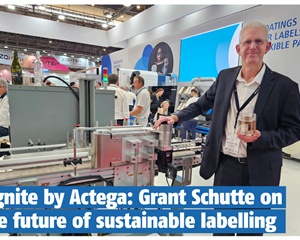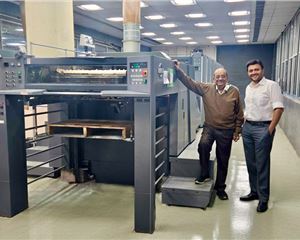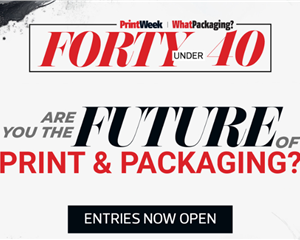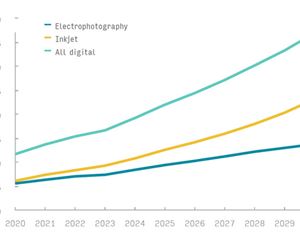Avery Dennison: An industry blueprint driven by detail and guided by vision
Jitesh Mehta of Avery Dennison delivers a vision for the packaging and labelling sector, pushing businesses to overcome geographical, product, and cultural constraints to drive transformative growth
18 Sep 2025 | By Noel D'Cunha
In the 2024 T20 World Cup final, Suryakumar Yadav’s audacious catch turned the tide for India. Leaping at the boundary, he tossed the ball back into play while crossing the line, then secured it upon return, clinching victory. Jitesh Mehta sees this as a vivid metaphor for the packaging and labelling industry, where “he showed he had the mindset to go to emerge beyond boundaries.”
For Mehta, this blend of skill, risk, and vision is critical to meet rising demands for speed, sustainability, and innovation. His strategy, rooted in cultural sensitivity, regulatory mastery, and trend-spotting, offers a blueprint for businesses to thrive in a fiercely competitive global market.
Geographical constraints
The packaging industry faces a stark choice, evolve or stagnate. “If we continue to do what we are doing today, possibly it will make us well less valuable for the customers,” Mehta warns, highlighting the risk of clinging to outdated practices. Customers now demand faster deliveries and sustainable products, pushing firms to rethink their approach. Growth lies in venturing into new regions, products, and market segments. Failure to adapt risks losing relevance to agile competitors.
Geographical limitations bind many businesses. “If 70%, 80%, 90% of your orders are coming from a restricted geography, then it very clearly tells you that you are born by your geographical constraint,” Mehta observes. Physical visits for quotations or orders further expose this dependency. Without digital platforms, firms remain tethered to inefficient models. Embracing digital tools is essential to unlock the global markets.
Digitalisation transforms operational reach. “If you don’t have a digital platform where your customers can place their order, then it means that you are born by geographical constraints,” Mehta asserts. Online systems enable seamless global client interactions. Investing in such infrastructure enhances efficiency and competitiveness. This shift is a cornerstone of sustainable expansion.
Product limitations pose another challenge. “If you are stuck by standard products, what does it mean? Standard products, extreme competition, thinning margins,” Mehta explains, urging firms to innovate. Developing novel products tailored to niche demands requires robust research.
Customisation offers a path to higher margins. “If we are saying that bulk of my business is coming from a few customers, my bulk orders, that’s what we prefer, then again, we are going to a situation which is high competition, thinning margins,” Mehta cautions. Small, bespoke runs cater to specific needs, yielding better returns. Firms must balance volume with value-added services. This strategic pivot can reshape revenue streams.
The urgency is clear. “Your competitors, be it from this industry or from the other industry, are not going to honour the boundaries,” Mehta notes, warning of ruthless market dynamics. Firms must act swiftly to transcend geographical limits. Digital adoption, product innovation, and customisation are non-negotiable. Only by breaking these barriers can the industry secure its future.
Cultural sensitivity, a strategic edge
Global expansion demands cultural acumen. “As the print business goes beyond the known geographies or the customer types, you are not just delivering print on, you know, ink on paper or ink on film, that’s not what you are delivering,” Mehta says, emphasising the emotional weight of content. Misjudging cultural nuances risks alienating clients. Teams must master local languages and aesthetics to connect authentically. Cultural fluency is the linchpin of market entry.
This goes beyond politeness. “When you are being sensitive culturally, it is not just being about polite, about being nice. This can be your competitive advantage,” Mehta argues. Precision in regional language printing avoids costly errors. Marketing must align with local values to resonate. Firms that excel here gain a distinct edge in crowded markets.
Training is pivotal. “The teams who are going and interacting with your customers need to know, what are the cultural nuances there, the culture clash specific tools and who wants?” Mehta asks, advocating for education. Region-specific knowledge equips staff for diverse interactions. This preparation strengthens client relationships and boosts penetration. Without it, expansion efforts risk cultural missteps.
The rewards are substantial. Culturally attuned firms can charge premiums for tailored solutions, Mehta suggests, as sensitivity fosters trust. Misaligned campaigns risk reputational damage. Cultural competence transforms expansion into a strategic triumph. It’s a market differentiator that drives loyalty. Businesses that master it stand out.
Implementation requires investment. “Are we training ourselves? Are we training our teams, all the cultural sensitivity when it comes to going beyond our normal, going beyond the geographies?” Mehta queries. Research into local customs is essential. Partnerships with cultural experts bridge knowledge gaps. Fluency in cultural dynamics is non-negotiable for global success.
The challenge persists. “Going to different geographies means your ability to print in different languages,” Mehta notes, highlighting ongoing demands. Cultural landscapes evolve, requiring constant vigilance. Firms must embed training into operations. Sensitivity, as Mehta envisions, drives sustained market dominance.
Navigating the regulatory maze
Compliance is a critical barrier to global growth. “Do we know the law of land? Do we know what is happening on sustainability?” Mehta asks, pointing to laws like PPWR, EUDR, and EPR. For non-EU firms, mastering these is vital to access European markets. Non-compliance can block lucrative opportunities. Understanding regulations is a cornerstone of global strategy.
Sustainability laws are complex and fluid. “There are lot of acronyms that we keep hearing, PPWR, DFR, UDR, the North American EP, or even in our country, EPR,” Mehta lists, noting their rapid evolution. For instance, PPWR demands detailed technical documentation. Ignorance of such rules can derail exports. Staying informed requires robust systems and expertise.
Sector-specific rules add complexity. “If you are to really look at submissive pharma, what are the laws, if you are related to semi food industry, what are the laws?” Mehta questions. The Falsified Medicines Directive mandates anti-counterfeiting measures. Food packaging faces unique regulatory hurdles. Non-compliance risks penalties and eroded trust.
Compliance infrastructure is essential. “Till the time we are able to decipher this, till the time we are able to know very clearly what each of these means,” Mehta warns, these remain tricky. Monitoring regulatory shifts demands dedicated resources. Collaborations with specialists address knowledge gaps. Proactive engagement ensures market access and credibility.
The benefits are clear. “If you are non-EU player, it is so very critical that you are sort of able to demonstrate technological documentation,” Mehta explains, citing PPWR’s impact. Compliant firms avoid disruptions and gain reliability. Compliance is a gateway to global opportunities. Ignoring it invites failure in a strict landscape.
The path demands vigilance. “What is an everchanging scenario in sustainability?” Mehta asks, noting constant updates. Firms must integrate compliance into planning. Mehta’s vision positions it as a foundation for growth. Mastering this maze unlocks vast global potential.
Seizing emerging market trends
Trends are central to Mehta’s vision. “Can you create a new segment in your markets based on what you have learned from other geographies?” he asks, citing China’s wet wipes market. Spanning facial, toilet, kitchen, pet, and baby wipes, it drives significant growth. India lags, offering a chance to pioneer a category. Seizing trends requires foresight and agility.
Equipment is a key hurdle. “You will need to know the technology behind and beyond the printing presses. What are equipment is required?” Mehta queries. Identifying reliable Chinese suppliers and agents is challenging. Assessing equipment in operation is crucial. These steps demand meticulous planning and expertise.
Cultural creativity offers another niche. “There is another example, which is called cultural creativity. These are nothing but small stickers which youngsters are putting in their diaries,” Mehta marvels. This category thrives abroad, with high spending. Replicating it domestically could unlock revenue. Firms must act swiftly to capture such markets.
The beverage sector in Europe and Southeast Asia provides insights. “If you talk about Europe, if you talk about Southeast Asian countries today, the beverage category is driving the growth much more significantly,” Mehta notes. India’s market trails, driven by less innovative packaging. Sustainability demands eco-friendly solutions. Market surveillance is critical to stay competitive.
Collaboration accelerates adoption. “There are very specific resources that I would say, everyday Listen, offers that you can really leverage,” Mehta says, pointing to Avery Dennison’s ecosystem. It connects firms to global best practices. Leveraging such resources drives innovation. Trends become growth engines when harnessed.
The stakes are high. “It’s all about going to those geographies and bringing it back to your own markets,” Mehta urges, stressing proactive engagement.
Merging physical-digital realms
The future lies in blending physical and digital products. “Every physical product is going to have a digital clone, is what we believe very strongly in very near future,” Mehta predicts. Labels with digital triggers enable this convergence. Firms must lead in this space. Delay risks losing ground to innovators.
Technical expertise is critical. “That would require integration of a digital trigger into the labels,” Mehta explains, citing QR codes or NFC tags. These enable real-time data exchange, enhancing experiences. This is a transformative opportunity. Early adopters will set market standards.
Benefits are compelling. “How many of us are really wanting to emerge beyond our current boundaries and say, yes, we want to participate in this segment?” Mehta challenges. Digital triggers authenticate products or deliver personalised content. Pharma labels could link to dosage guides. Beverage packaging might connect to loyalty programmes.
Challenges remain. “We want to be the ones who have the capability of integrating the physical and digital,” Mehta urges, noting investment needs. Developing capabilities requires technology and skills. Partnerships with tech providers accelerate progress.
The digital-physical merger is imminent, demanding swift action. Avery Dennison supports this shift. “We also have a really big setup of R and D,” Mehta notes, highlighting their knowledge centres.
These offer training in advanced technologies. Firms can test solutions, ensuring readiness. Embracing digital integration future-proofs businesses. The roadmap is urgent. “This is a very classic example of something which is going to become very big in times which are not far away,” Mehta predicts.
Fostering collaborative ecosystems
No firm succeeds alone. “InsightX is our latest, newest initiative where we have set up something for the ecosystem called Connect,” Mehta says, describing Avery Dennison’s platform. It links brand owners, designers, recyclers, and converters. This fosters knowledge-sharing and resource access. Collaboration drives innovation and market entry.
The Knowledge Centre is vital. “We also have a really big set-up of R&D, and I would specifically like to quote the case of material science characterisation,” Mehta highlights. Labs analyse materials for specific applications. This supports product development for niche markets. Such infrastructure empowers confident innovation.
Practical support is crucial. “When we wanted to figure out who is a supplier of these kind of equipment, we would figure out a few suppliers out of China,” Mehta explains, citing wipes market challenges. Avery Dennison connects firms to agents and demonstrations. This reduces risks and streamlines entry. It’s a model for success.
Entrepreneurs gain immensely. “Lot of our team members have been trained at the Knowledge Centre,” Mehta notes. It offers cutting-edge converting training. Ecosystem Connect provides global trend insights.
The impact is transformative. Collaborative networks create industry-wide benefits. Firms that engage gain a competitive edge. Partnership drives breakthroughs, as Mehta envisions.
The call is clear. “We are here, willing to help you,” Mehta urges, inviting firms to leverage resources. Collaboration is a force multiplier. By connecting with ecosystems, businesses achieve more. The future belongs to those who build these networks.












 See All
See All